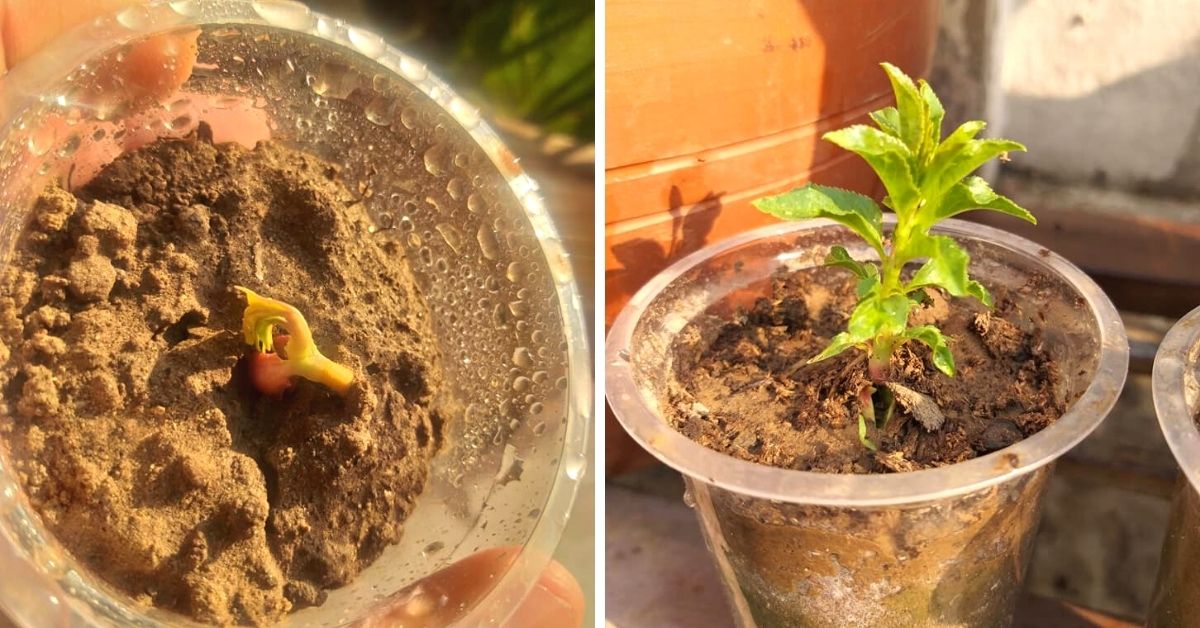Whether they’re soaked, roasted or just raw, there are many ways to consume almonds, and each one is delicious in its own right. You can even use the nuts in cakes or thick spreads. It’s not just the taste that’s so good — almonds have significant antioxidants, and are a rich source of vitamins and fibre.
Perhaps this is why Sarvind Dhiman, a resident of Ambala, is growing them right in his backyard. While he is a manager at an agrochemical company, he grows food as a hobby. It was only a few years ago that he decided to add almonds to that mix.
Over the last year and a half, Sarvind’s almond plant has grown to be over 4 feet tall.
How did he do it?

In three easy steps
Sarvind searched the internet, read articles, and watched a variety of videos to find ways to grow almonds at home.
The first step, he says, is to buy good quality almonds from the market. “It’s better to identify a few healthy ones from the lot. Soak a few in water for 24 hours. Put some cinnamon in the bowl to avoid any fungus or other infestation,” he suggests.
The next step is to wrap these almonds in moist tissue paper and store them in an airtight container for refrigeration. “The box should be kept refrigerated between 0-10 degrees Celsius for days,” he says.
Fruit of patience
“Once the almonds bear sprouts, they are ready to be transferred to the soil. The plant will need watering every 10-15 days, depending on the moisture levels,” he adds.
Sarvind then adds a mix of vermicompost and cow dung to the soil. “A mixture of sandy and clay soil also works for the plant,” he says.

He notes that he has not taken additional efforts to prevent the plant from pests or insects.
Sarvind says that his plant has been growing steadily through all weather conditions. “It is best to plant it before November, so it grows better by March,” he adds.
In November 2020, he posted pictures of the newly grown plant on Facebook, and people started congratulating him and asking about the process.
“It will take 3-4 years more for the tree to bear fruits and for me to taste the almonds. Growing the plant requires much patience,” he says.
Sarvind notes that the plant may need to be transported to a bigger pot or land after some time. But for now, it is taking shape in his backyard.
Edited by Divya Sethu
No comments:
Post a Comment